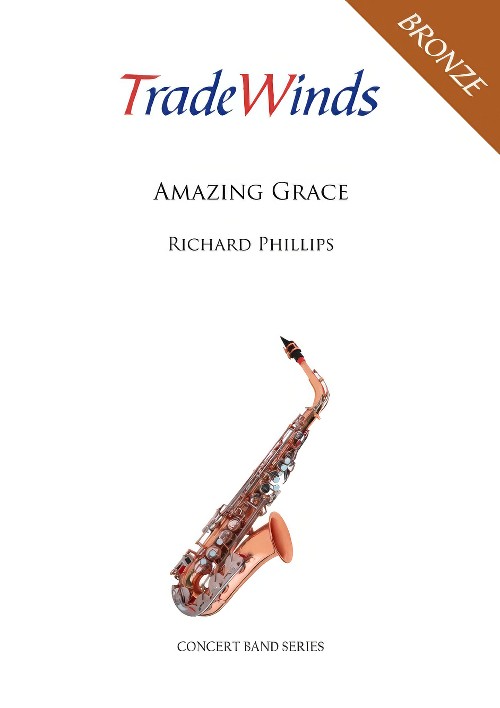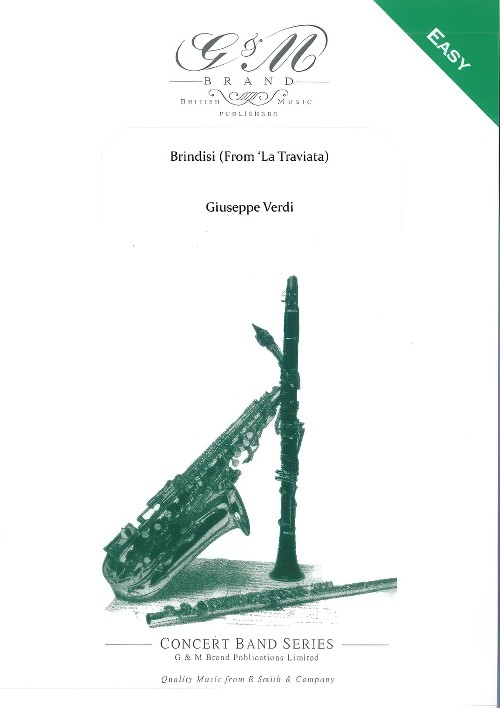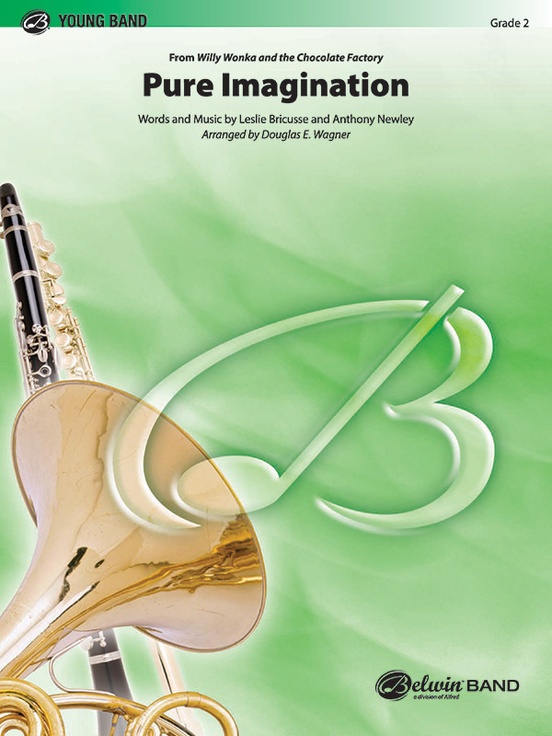Results
-
 £6.95
£6.95Amazing Grace (Concert Band - Score only) - Newton, John - Phillips, Richard
The life story of John Newton is well-documented and his occupation as a slave-trader and subsequent conversion and ordination as curate of Olney, Buckinghamshire, well-known. This incredible story probably makes the words to Amazing Grace! so remarkable, although, Newton can only be credited for the first three verses. This arrangement, although not technically difficult, will require a sustained sound towards the end during its climactic conclusion. It is therefore advisable that the physical demands be understood before commencement so that the correct measurement of exertion can be made throughout the presentation.
Estimated dispatch 7-14 working days
-
 £49.95
£49.95Brindisi (From La Traviata) (Clarinet/Bassoon Or Cornet/Euphonium Duet) (Concert Band - Score and Parts) - Verdi, Giuseppe - Brand, Geoffrey
This duet feature for Bb Clarinet (or Trumpet) and Bassoon (or Euphonium) is a merry drinking song from Verdi's opera "La Traviata." Brand, Geoffrey cleverly left the arrangement in the original key of B-flat so that it may be performed with soprano and baritone soloists and even a chorus if you so choose.
Estimated dispatch 7-14 working days
-
 £9.95
£9.95Brindisi (From La Traviata) (Clarinet/Bassoon Or Cornet/Euphonium Duet) (Concert Band - Score Only) - Verdi, Giuseppe - Brand, Geoffrey
This duet feature for Bb Clarinet (or Trumpet) and Bassoon (or Euphonium) is a merry drinking song from Verdi's opera "La Traviata." Brand, Geoffrey cleverly left the arrangement in the original key of B-flat so that it may be performed with soprano and baritone soloists and even a chorus if you so choose.
Estimated dispatch 7-14 working days
-
 £60.50
£60.50Pure Imagination (from )
With its message of endless possibilities and dreams fulfilled, this piece, from the 1971 Academy-award nominated film score of Roald Dahl's (1964), by songwriting team Leslie Bricusse and Anthony Newley, has remained popular since the 1970s---and even more so today, or so says the more than 5.5 million views on YouTube. The tune surfaces three times in the movie, first during the opening title music, then as the feature number by Gene Wilder as he leads his assembled golden ticket winners into the chocolate room, and finally, as part of the "Wonkavator" music at the end. Great fun for all generations, and all generations to come! This arrangement provides a dramatic opportunity to teach expression. A charming and musical choice, it is memorable and heartwarming. (2:45) This title is available in MakeMusic Cloud.
Estimated dispatch 3-5 working days
-
 £66.95
£66.95Heart of Gold - Brian Balmages
This highly energetic work uses a simple melody combined with fantastic orchestration for amazing results. A fantastic opportunity to teach 7/8 in a fun, engaging way, the piece is always based on 2+2+3 groupings and has modest technical demands so students can focus on meter. Directors will be excited at how quickly students grasp the concept and are able to dive into the rich musical lines woven throughout. So much fun!
Estimated dispatch 3-5 working days
-
 £52.95
£52.95Santa's Holiday Jam
Are you ready to rock . . . holiday style? Get your groove on with , a rock and roll medley of three timeless favorites for young players that will put everyone in the spirit of the season. Arranged for young band by veteran composer/arranger Todd Stalter, this piece provides players with comfortable ranges and familiar rhythms in a comfortable key so they can focus on performing the music in an authentic rock style. Featuring "Up on the Housetop," "We Wish You a Merry Christmas," and "Auld Lang Syne." So, lay down that bass line, turn up the volume, and shake off the winter cold with this hot chart. (1:45)
Estimated dispatch 3-5 working days
-
 £32.00
£32.00Error Detection - Student's Edition - Robert Spradling
The Error Detection: Exercises for the Instrumental Conductor texts are designed to improve the critical listening skills of the conducting student through real music excerpts that contain planted errors in the parts for the conductor to find. Both books contain 54 excerpts from standard band literature from grades 2 to grade 6 so students gain knowledge of real music they can use later, not just non-musical etudes. The teacher's edition contains over 350 pages of materials with analysis sheets and answer keys to help the conducting teacher to easily evaluate the student's progress. The teacher's edition also comes with a CD-ROM containing all of the instrumental parts for all of the musical excerpts as PDF files, so the teacher can just print the amount of parts needed for each example, and the examples are arranged to sound satisfying with as little as five players. The Error Detection program has been tested for over 3 years at major university programs like the University of Minnesota, Illinois State University, and the College-Conservatory of Music at the University of Cincinnati.
Estimated dispatch 12-14 working days
-
 £147.00
£147.00Error Detection - Teacher's Edition - Robert Spradling
The Error Detection: Exercises for the Instrumental Conductor texts are designed to improve the critical listening skills of the conducting student through real music excerpts that contain planted errors in the parts for the conductor to find. Both books contain 54 excerpts from standard band literature from grades 2 to grade 6 so students gain knowledge of real music they can use later, not just non-musical etudes. The teacher's edition contains over 350 pages of materials with analysis sheets and answer keys to help the conducting teacher to easily evaluate the student's progress. The teacher's edition also comes with a CD-ROM containing all of the instrumental parts for all of the musical excerpts as PDF files, so the teacher can just print the amount of parts needed for each example, and the examples are arranged to sound satisfying with as little as five players. The Error Detection program has been tested for over 3 years at major university programs like the University of Minnesota, Illinois State University, and the College-Conservatory of Music at the University of Cincinnati.
Estimated dispatch 12-14 working days
-
 £71.50
£71.50Stars and Stripes Forever Trio - John Philip Sousa
Americas most famous march, written by the most famous band leader in the world, has entertained and inspired players and audiences since its first performance in 1897. This setting for young bands includes the most famous themes from this great march (the introduction and the trio) so young bands can enjoy performing this world-renowned work. Two versions of the famous piccolo solo are included, one advanced and one easier, so you can feature either a star soloist or the entire flute section.
Estimated dispatch 7-14 working days
-
 £71.50
£71.50Edgar Allan Poe - Barry E. Kopetz
Edgar Allan Poe is perhaps most well known for his writings on Gothic topics, darkness, and early forms of science fiction, and he almost single-handedly created the genre we now call the detective story. This work effectively captures the darkness that so poignantly defines Poe, the writer. The slow, brooding introduction captures the dark moods that characterize so much of his writing. The second section envisions Poe as he desperately writes, one step ahead of the poverty that always seemed just one heartbeat away. A chilling portrait of this famous literary figure.
Estimated dispatch 7-14 working days
